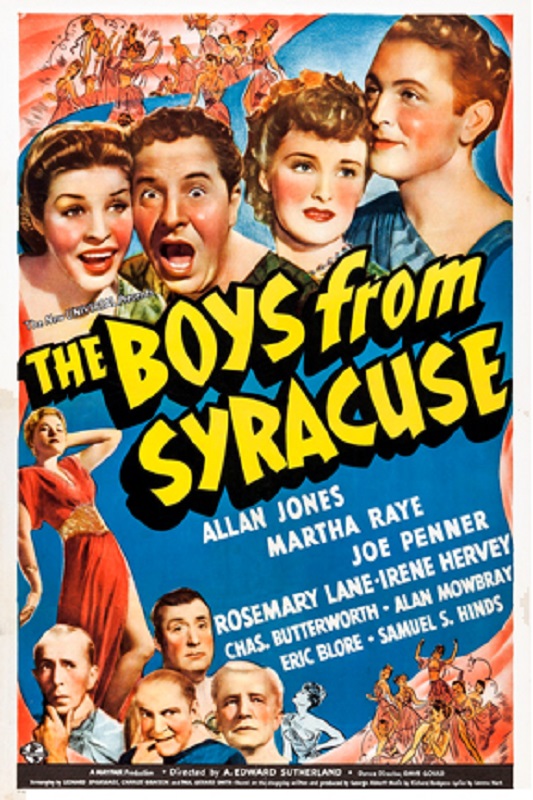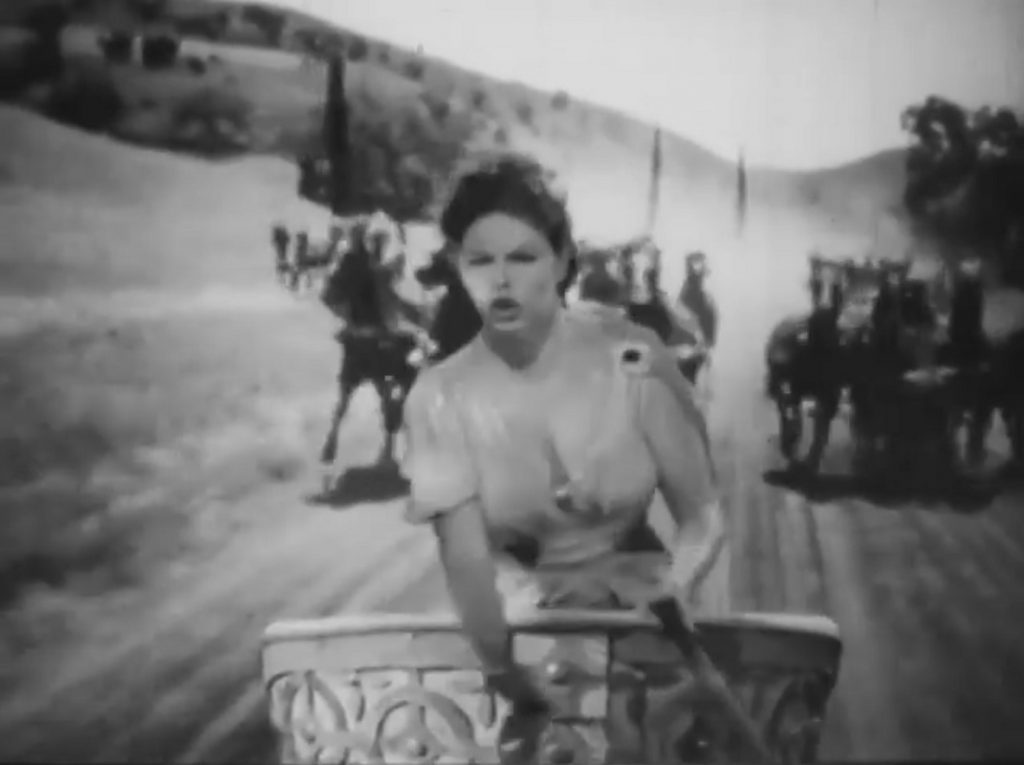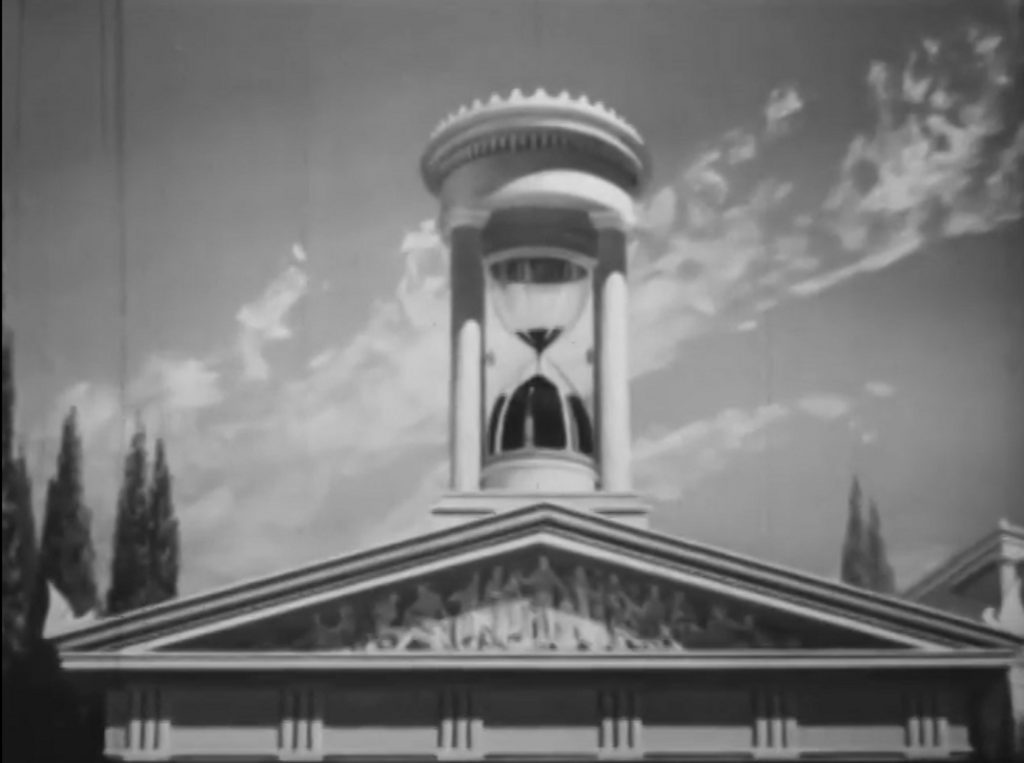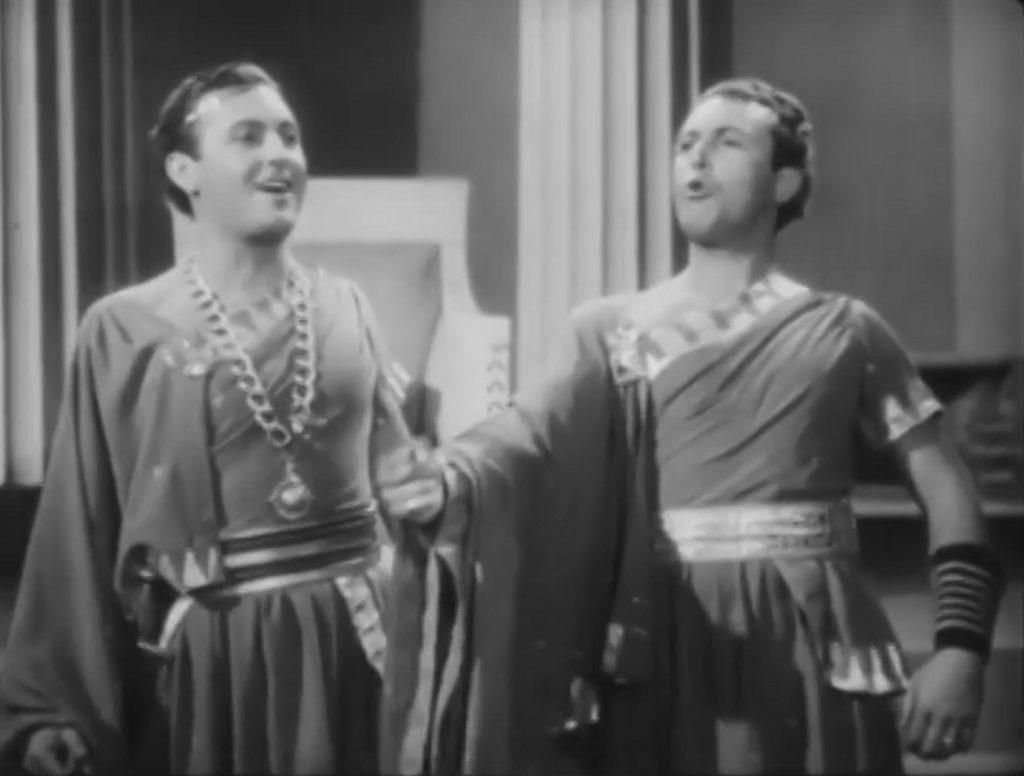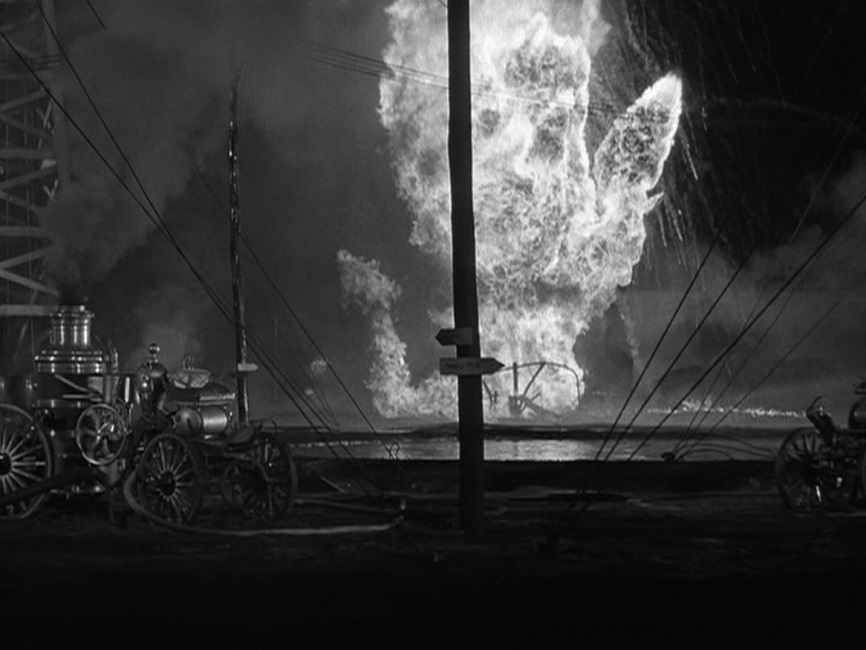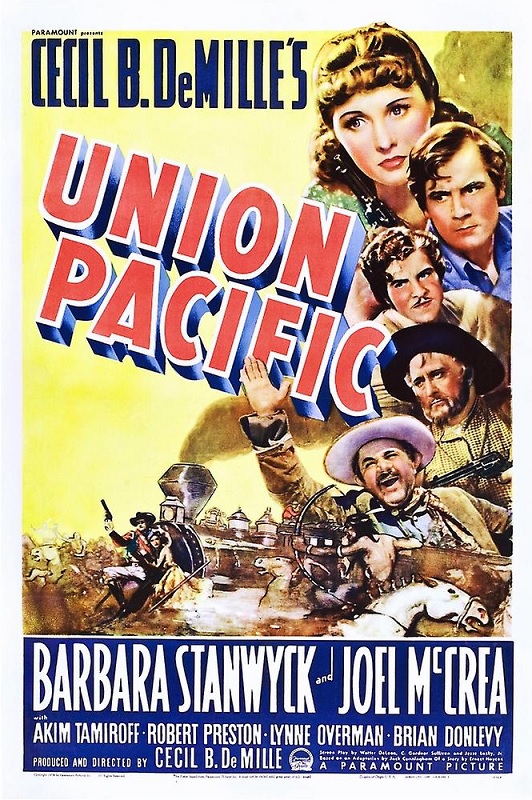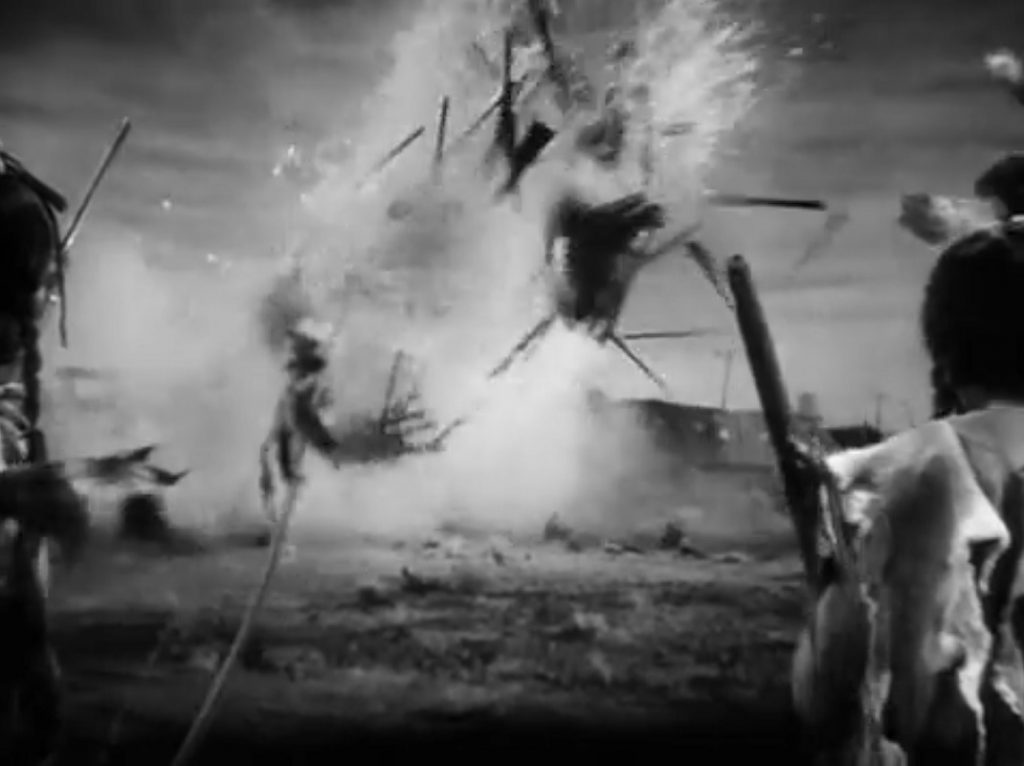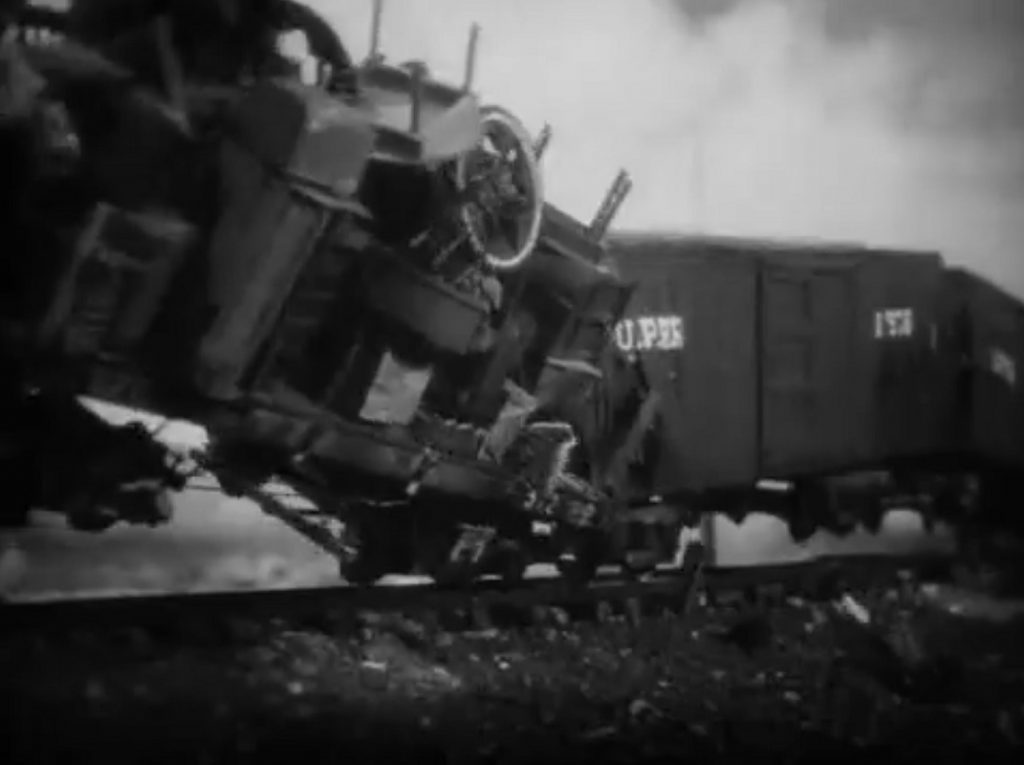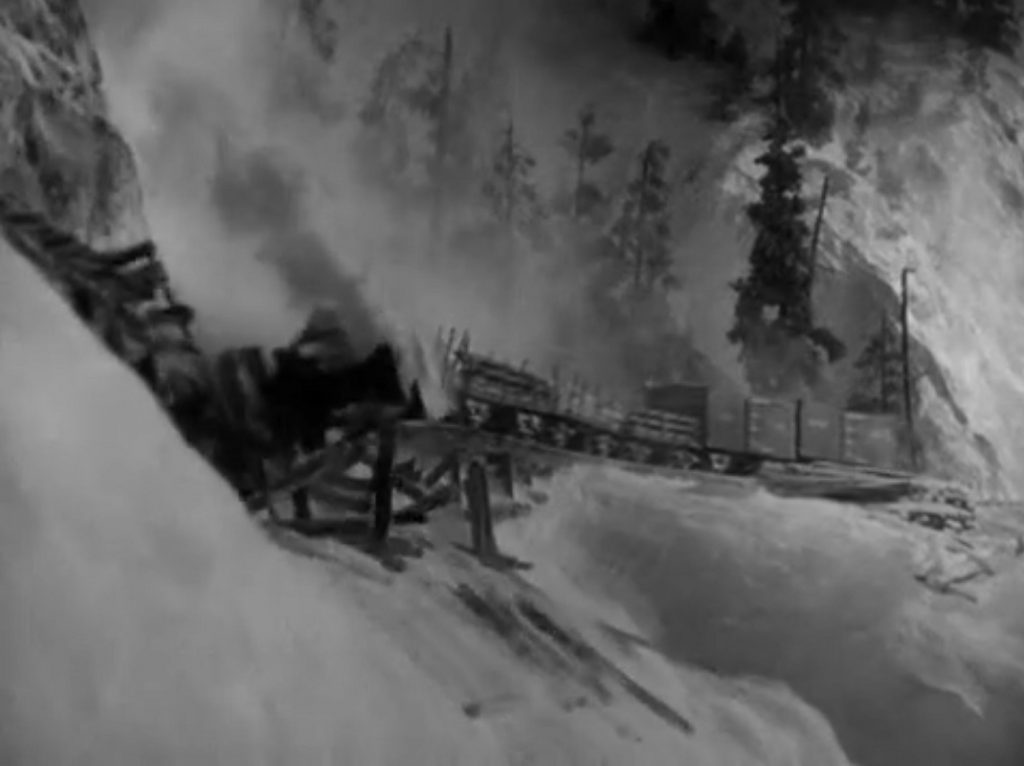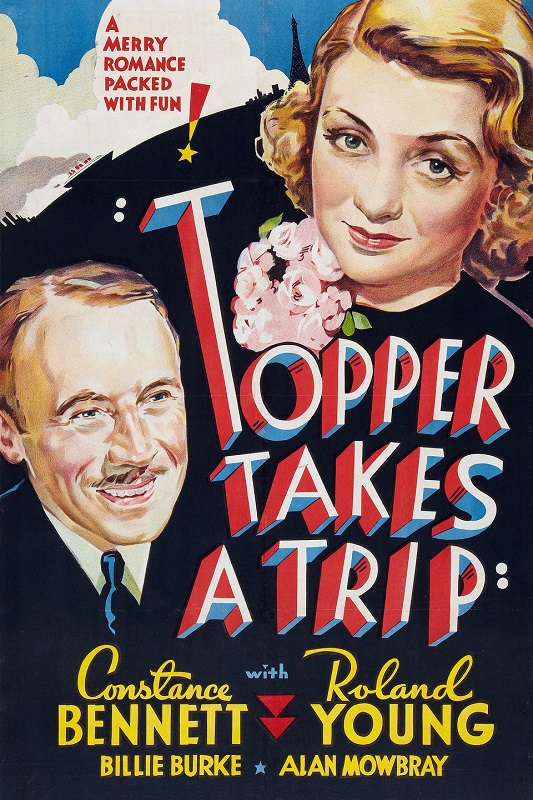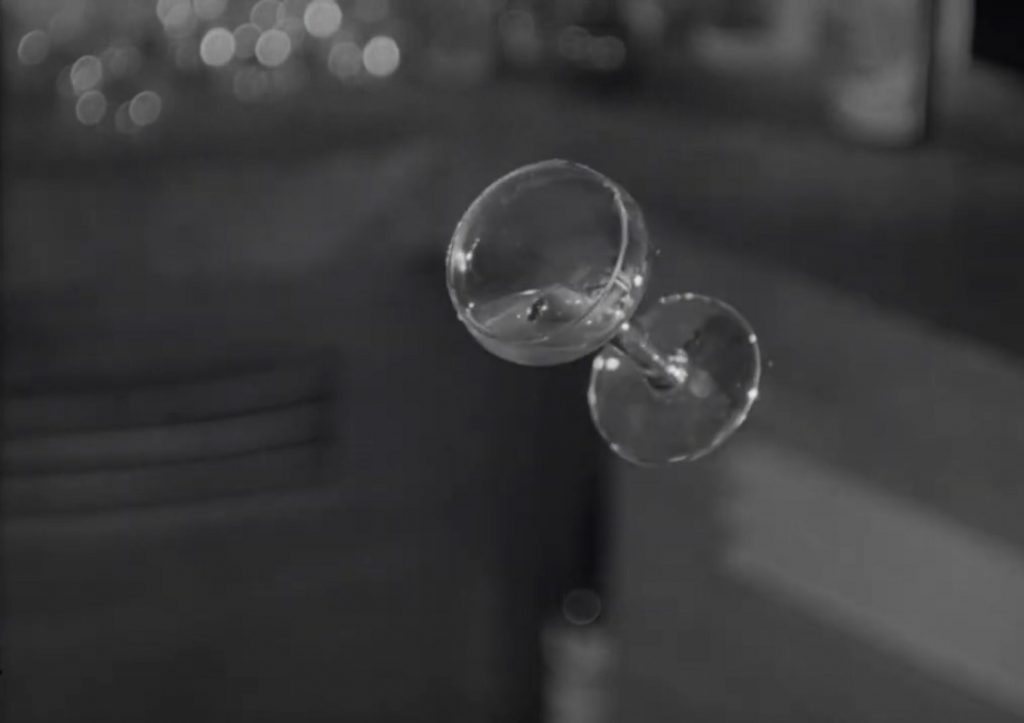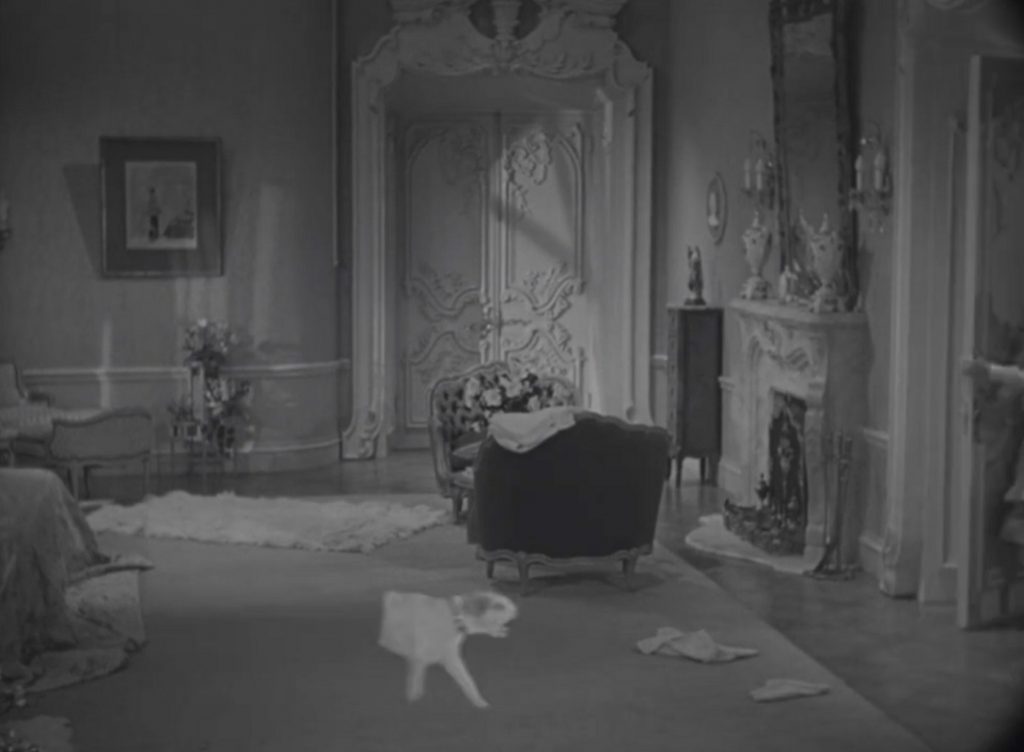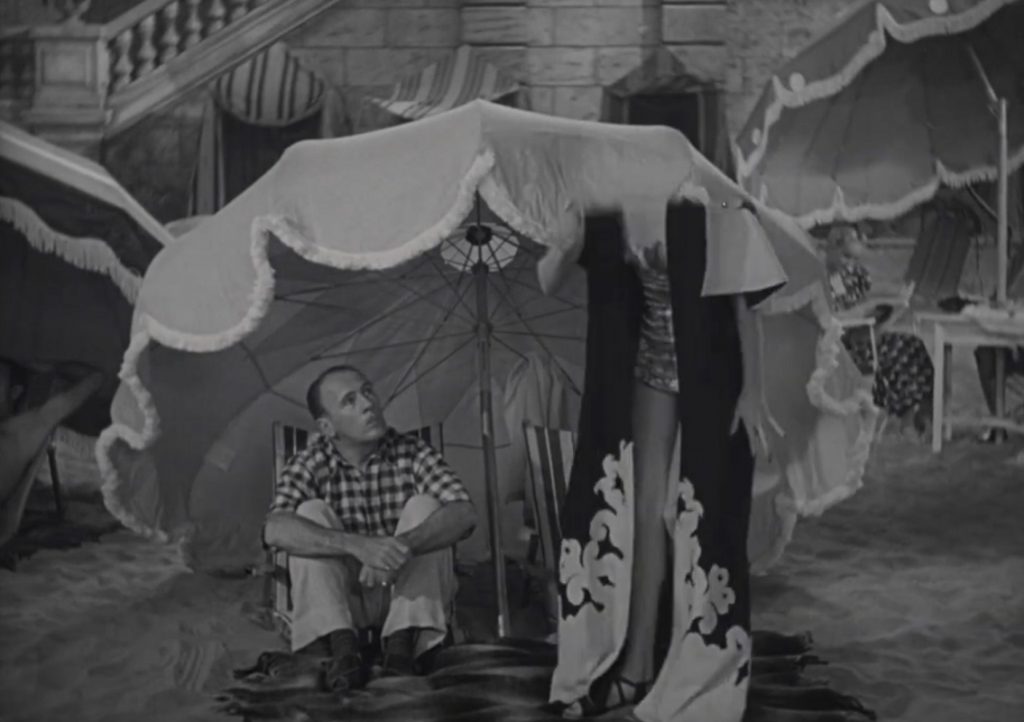



Foreign Correspondent – 1940

The Special effects for this movie were pretty much perfect. The only thing I give it a mark off for is the image of the man falling from the tower. That’s the only effect about which I have anything bad to say, so I’ll just get it out of the way. It was pretty laughable. So a man falls out of a high tower and we are treated to a wide shot of the tower as a tiny black shape plummets to the ground. The shape was a statue with no movement at all. The least they could have done was drop a dummy and composite it with the obviously still-shot background of the tower. There was more movement in the composited tree at the lower left corner of the screen than in the falling figure.
But aside from that, the film’s effects were brilliant and perfectly executed. I saw a documentary that explained some of them. For example, the windmills in the Dutch countryside. You see the shot, and it appears that they filmed the shot in a field outside of Amsterdam. But in fact, it was all filmed in a studio. The sky, the road, the field, and two of the windmills were part of an artificial background. But they looked real, because the brilliant director, Alfred Hitchcock, had them attach moving sails through the matte painting. So simple, and yet so effective!
Another simple effect that this movie seemed to get right was the rear-projected shots of people driving in cars. The backgrounds seemed to be moving at the right speeds, which is more than I can say for other movies that used the same technique. And there was some pretty spot-on compositing in the scene in which Joel McCrea, playing the film’s lead, Johnny Jones, has to creep along a ledge on the outside of a tall building. The image was pretty seamless.
And the movie’s grand finale was the plane crash into the Atlantic Ocean. The actors playing the passengers had to deal with a severely tilted set as the aircraft was speeding toward the water. Remember, stunts are part of special effects. Then there were explosions as the German guns fired at the plane.
But the coolest effect was when they hit the water. There was a shot of the pilots trying to flee the cockpit at the moment of the impact. This was done using a rear-projected image of the Ocean, shot by a stunt pilot diving at the water. Then, before the stunt pilot began to pull out of his dive, a ton of water was forced through the screen and into a mock-up of the cockpit. It was a fantastic effect that looked amazing. However, as I am thinking about it, I notice that in an earlier shot, an anti-aircraft bombshell had taken out the side of the cockpit, right next to the pilot. But in that awesome shot when the plane hit the water, there was no evidence of that damage. Well, I guess Hitchcock didn’t think of absolutely everything. But he was still an outstanding and brilliant director.





